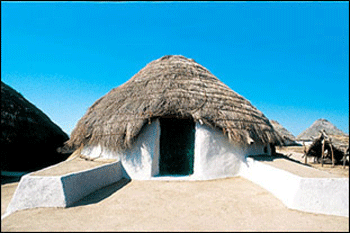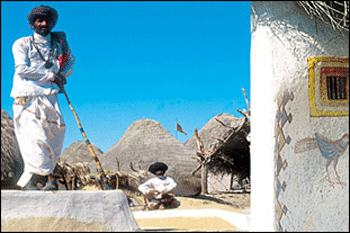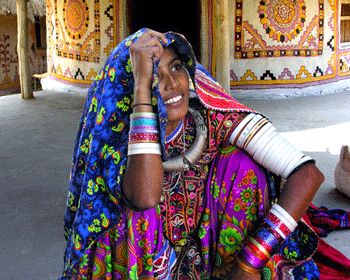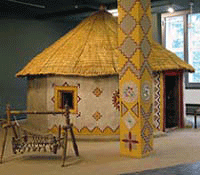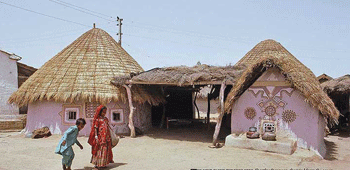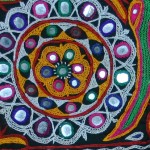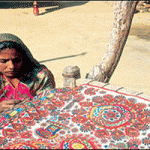‘Bhung’ or mud hut a traditional construction in Kutch is an engineering wonder.
Here are the mud houses or bhungas and glipses of people of Kutch.These traditional circular homes withstood the devastating earthquake (2001). They are also considered cyclone proof. They can be constructed with local material.
The colourful and one of the extremely rich in crafts region of Gujarat (India) is Kutch. Many communities and tribes in this region have their own distinctive styles in textiles, embroidery and handicrafts. Each community and tribal group has its own lexicon of motifs and embroidery stitches.
Bharwaads
Rabaaris are the ones who decorate the insides of their mud-and-thatch huts with ‘lippankam’ or mud-mirror work; the Bharwaads are seen in their exquisitely embroidered dresses and clothes; the Meghwaals decorate the exteriors of their mud huts with alluring patterns; the nomadic Jaths whose subgroups include the graceful Fakirani Jaths, live in huts made of coloured reeds. And you can see a group of Jath women walking along the road in their brightly coloured and beautifully embroidered costumes.
Meghwaals
What makes the `bhungas’ so strong?
Their circular design and the steely mesh of mud plaster and twigs make them resist any wind pressure and quake. The `bhungas’, which ‘even a king would envy’ for its elaborate design and artistic elegance, have a light dome-shaped bamboo and thatched roof and a circular wall plastered with mud, twigs and dung.
Their thick walls keep the interior cool when the temperature rises to 46 degrees celsius in summer and warm when it drops to two degrees in winter.
Above image is part of permanent exhibitionin in the Museum für Völkerkunde zu Leipzig in Germany.
bhunga out of clay and reed
mirror work embroidery, hand woven jute rug
Rabaaris
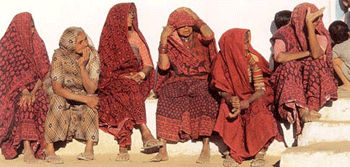
I had to bring these enduring images of Kutch & Bhung before I do a post on lippankam and other crafts!
(Images courtesy BAPS charities, Michael Sheridan, craftsinindia,
